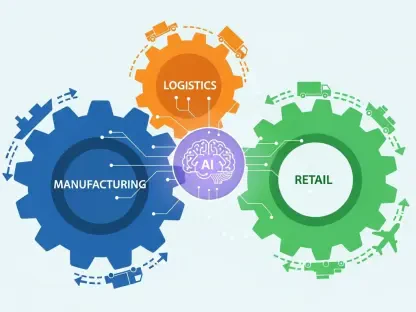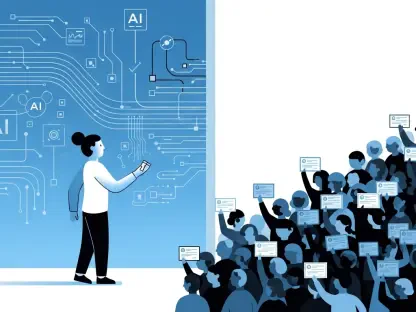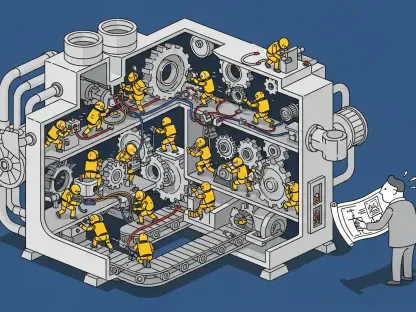In the rapidly evolving landscape of healthcare, Artificial Intelligence (AI) is emerging as a transformative force in radiology, fundamentally altering the dynamics between patients and medical professionals. This cutting-edge technology is not merely a tool for improving diagnostic precision; it represents a paradigm shift that empowers patients to take an active role in their health decisions while equipping doctors with enhanced capabilities to deliver superior care. From demystifying complex medical data to optimizing clinical processes, AI stands at the forefront of a healthcare revolution that promises better outcomes for all. The implications of this shift extend far beyond technical advancements, touching on deeply personal, ethical, and even environmental considerations. As radiology adapts to these changes, the focus remains on balancing innovation with responsibility, ensuring that technology serves as a bridge rather than a barrier in the patient-doctor relationship. This exploration delves into the multifaceted impact of AI, shedding light on its potential to reshape the future of medical imaging and diagnostics.
Enhancing Patient Engagement through Technology
The integration of AI into radiology is redefining how patients interact with their healthcare journeys, breaking down longstanding barriers to understanding medical information. Advanced tools, such as large language models, distill intricate diagnostic reports and terminology into clear, accessible explanations, enabling patients to comprehend their conditions with greater ease. This transformation fosters a sense of agency, as individuals can engage in informed discussions with their healthcare providers, asking pertinent questions and contributing to decisions about their treatment. Experts emphasize that this shift positions patients as active partners rather than passive recipients, creating a collaborative environment that enhances trust and communication within the medical setting, ultimately leading to more personalized and effective care strategies.
Beyond accessibility, AI cultivates a symbiotic relationship between patients and technology that drives continuous improvement in healthcare delivery. Patients contribute valuable personal data that refine diagnostic algorithms, helping systems become more accurate over time, while in return, they receive tailored insights that address their unique health needs. This mutual exchange, guided by medical professionals who ensure data integrity and relevance, underscores the importance of human oversight in leveraging AI effectively. However, the consensus remains clear: while AI serves as a powerful aid in education and engagement, it must complement rather than replace the expertise and empathy of trained clinicians, maintaining the essential human element at the heart of patient care.
Optimizing Clinical Workflows for Better Efficiency
For radiologists grappling with demanding schedules, AI offers a vital lifeline by streamlining critical workflows and enhancing operational efficiency in clinical environments. By automating routine tasks such as image acquisition, processing, and preliminary reporting, AI significantly reduces the time spent on repetitive processes, allowing medical professionals to focus on complex cases that require nuanced judgment. Studies have shown that these tools not only expedite diagnostic timelines but also improve the quality of imaging outputs, leading to more reliable results. This alleviation of workload pressures translates into better patient interactions, as doctors can dedicate more attention to addressing individual concerns and tailoring treatment plans with greater precision.
However, the adoption of AI in radiology workflows is not without its challenges, as successful integration hinges on building trust and acceptance among healthcare teams and their patients. Resistance often stems from unfamiliarity with the technology or concerns about reliability, necessitating comprehensive training programs to bridge knowledge gaps. When implemented thoughtfully, AI acts as a catalyst for elevating care standards, enabling radiologists to prioritize critical thinking over administrative burdens. The key lies in fostering an environment where technology is viewed as a supportive ally, enhancing rather than overshadowing the expertise that defines medical practice, ensuring that efficiency gains translate into tangible benefits for patient outcomes.
Navigating Ethical Dilemmas in AI Implementation
As AI continues to permeate radiology, it brings with it a host of ethical considerations that demand careful scrutiny to safeguard patient well-being and trust. One pressing concern is the risk of inaccurate outputs or “hallucinations,” where AI-generated information may seem plausible but lacks factual grounding, potentially leading to misdiagnoses if not critically evaluated. Additionally, there’s the danger of automation bias, where clinicians and patients might over-rely on AI recommendations without questioning their validity. Experts advocate for a framework of “responsible AI,” which prioritizes principles like equity, data privacy, and transparency to ensure that technology serves diverse populations fairly and does not exacerbate existing disparities in healthcare access or outcomes.
Addressing these ethical challenges requires a proactive approach to education and dialogue within the medical community and beyond. Both healthcare providers and patients need to understand the capabilities and limitations of AI tools to prevent undue dependence on automated systems. Initiatives focused on transparency—such as clear documentation of how AI decisions are made—can help demystify the technology and build confidence in its use. By cultivating an atmosphere of informed skepticism and ethical collaboration, the field of radiology can harness AI’s potential while mitigating risks, ensuring that innovation aligns with the fundamental goal of delivering safe, equitable, and patient-centered care.
Addressing Sustainability in AI-Driven Radiology
The environmental implications of AI deployment in radiology present a critical dimension that cannot be overlooked as the technology scales across healthcare systems. Training sophisticated AI models demands substantial energy resources, sparking valid concerns about the carbon footprint associated with such processes, especially in an era increasingly focused on ecological responsibility. However, a nuanced perspective reveals that operational uses of AI, such as generating reports or analyzing data, often prove more energy-efficient compared to traditional human-led methods. Research highlights the potential for significant reductions in emissions when AI is applied strategically, offering a counterbalance to the environmental costs if managed with foresight and innovation.
To reconcile technological advancement with sustainability, experts propose actionable strategies that prioritize greener practices in AI development and application within radiology. Leveraging renewable energy sources for data centers and optimizing storage solutions can substantially lower the environmental impact of AI systems. Furthermore, AI itself can contribute to sustainable clinical practices by minimizing resource waste, such as reducing the need for contrast agents or preventing unnecessary scans through precise diagnostics. This dual focus—mitigating AI’s ecological footprint while using it to promote eco-friendly healthcare—reflects a commitment to balancing progress with planetary health, ensuring that the benefits of innovation extend beyond immediate medical gains to long-term global well-being.
Shaping the Future of Radiology with Responsible Innovation
Reflecting on the strides made in radiology through AI, it’s evident that the journey has been marked by remarkable advancements in patient empowerment, workflow efficiency, and diagnostic precision. The technology has bridged gaps in understanding, allowing patients to engage more deeply with their care, while offering clinicians tools to manage demanding workloads with greater ease. Ethical frameworks and sustainability efforts have also played pivotal roles in guiding this transformation, addressing critical concerns that emerged alongside rapid adoption. Each step forward demonstrates a commitment to aligning innovation with the core values of healthcare, ensuring that technology serves as an enhancer of human expertise rather than a replacement.
Looking ahead, the focus must shift toward actionable strategies that sustain this momentum while tackling unresolved challenges in the integration of AI. Prioritizing education for both medical professionals and patients will be essential to deepen trust and understanding of AI tools, preventing misuse or over-reliance. Simultaneously, continued investment in sustainable practices and ethical guidelines will ensure that radiology evolves responsibly, balancing technological growth with societal and environmental needs. By fostering collaboration across stakeholders, the field can build on past achievements to create a future where AI amplifies the best of human care, delivering outcomes that are equitable, efficient, and enduring.









